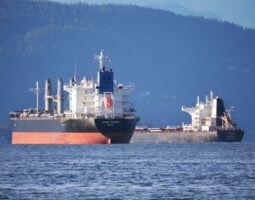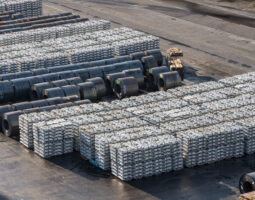LA Port Head Praises Kansas City’s Supply Chain Role
Kansas City logistics had its time to shine Wednesday when Executive Director of the Port of Los Angeles Gene Seroka shared his thoughts at KC SmartPort’s annual industry briefing, KC Delivers.
Seroka lent his firsthand experience to an hour-long presentation reviewing both the logistics challenges of southern California and the supply chain significance of the Kansas City region. From challenges of container clearing to the importance of data visibility, Seroka touched on issues top-of-mind for professionals at the top of the industry.
Kansas City is an Inland Pathway for So-Cal Imports
Seroka took time to highlight the strong supply chain relationship between the ports of Los Angeles-Long Beach and the greater Kansas City region.
- Two Class 1 railroads – BNSF and Union Pacific – connect the ports of Long Beach and Los Angeles directly to Kansas City.
- Kansas City itself receives more cargo from the San Pedro Bay port facilities than any other port.
- Missouri and Kansas each support 64,000 and 38,000 jobs respectively that are connected to trade through Los Angeles/Long Beach.
- Trade through the ports of San Pedro Bay produces more than $1.4 billion in value for Kansas City and its surrounding regions.
Recapping Recent Challenges
It is no secret that the ports of southern California have been the focal point of American supply chain frustrations in the pandemic era. Burgeoning vessel queues, container backlogs at terminals, and difficulties with both rail and truck transportation have rankled importers. Meanwhile, export numbers have dropped to historic lows despite aggressive trade policies by two consecutive presidential administrations.
Seroka illustrated the development of these issues chronologically. He started with the abrupt shutdown of Chinese factories and ports at the start of the pandemic and worked through the whiplash effects: container misplacement, spiking consumer goods demand, labor limitations, and more.
But despite the numerous challenges faced at the Port of Los Angeles these past 18 months, Seroka expressed optimism for the future.
Supply Chain Data Visibility Key to Future Stability
Seroka emphasized the importance of data visibility and sharing across logistics sectors as a tool to counteract disruptions. Specifically, he pointed out the Port of LA’s own data visibility platform and how it helps inform decision-making for all port operation participants. Now, Seroka’s team and other supply chain operators are working with the White House to develop a nationwide supply chain data visibility platform.
Seeing a similar trend, Scarbrough has implemented its own data visibility tools. The Clarity tracking dashboard offers customers a view of ongoing shipments with a broad spectrum of parameters to explore. Visibility is the keystone of effective logistics in the years to come, and we are investing in the tools necessary to provide it. Contact us today to learn more.

